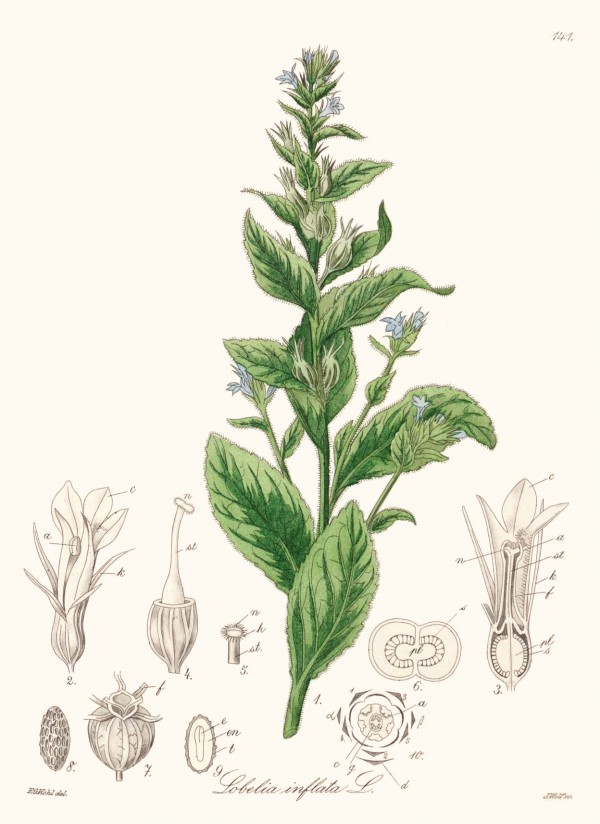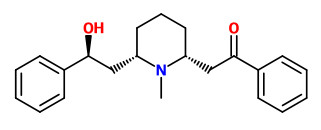Lobelia inflata L. - Campanulaceae - Indian tobacco, asthma weed, puke weed, Indianertabak, Lobelie
Annual herb, up to 50cm tall, native to eastern North America; leaves soft; flowers small, pale blue.
„Lobelia (Lobelia inflata), also called Indian tobacco, has a long history of use as an herbal remedy for respiratory conditions such as asthma, bronchitis, pneumonia, and cough. Historically, Native Americans smoked lobelia as a treatment for asthma. In the 19th century, American physicians prescribed lobelia to induce vomiting in order remove toxins from the body. Because of this, it earned the name „puke weed.“ Today, lobelia is sometimes suggested to help clear mucus from the respiratory tract, including the throat, lungs, and bronchial tubes. Although few studies have evaluated the safety and effectiveness of lobelia, some herbalists today use lobelia as part of a comprehensive treatment plan for asthma…
… lobeline was once used as a nicotine substitute in many antismoking products and preparations designed to break the smoking habit. In 1993, the U.S. Food and Drug Administration (FDA) prohibited the sale of smoking products containing lobeline. The FDA reported that such products were not effective in helping people quit or reduce smoking.“ http://umm.edu/health/medical/altmed/herb/lobelia
The above-ground parts (stems and leaves, Lobeliae herba) are traditionally used as respiratory stimulant and cough treatment. Extracts are included in preparations for the symptomatic treatment of asthma, bronchitis and pertussis. Several piperidine alkaloids (up to 0.5%) are present, of which lobeline (mixed agonist-antagonist at nicotinic acetylcholine receptors) is the major component.
[Medicinal Plants of the World. Ben-Erik Van Wyk and Michael Wink, Pretoria 2004, 194]
„The credit for the introduction of Lobelia into medical practice is due to Dr.Manasseh Cutler and Dr.Samuel Thomson. As early as 1773, Thomson became aware of its power to procure vomiting and, during 1791, he first became practically acquainted with its ability to afford relief in diseases like colic, rheumatism and fever. Thomson and Cutler claimed to have used Lobelia for the treatment of asthma in the period 1805-1809. Thus, during the 19th century, Lobelia was one of the most medically important plants, used as a valuable remedy
for asthma. Lobelia can, however, be a deadly poison in sufficient quantities. Indeed, Thomson fatally poisoned one of his patients (Ezra Lovett) by the use of Lobelia…
Lobeline relaxes the tissues and favours expectoration when a large quantity of mucus is secreted. The potent action of this alkaloid on the respiratory system has therefore been used with success in numerous applications. Chronic pneumonia, asthma, bronchitis and laryngitis are all conditions in which lobeline has been of great service. It seems that the treatment of asthma reported by Thomson and Culter constitutes the first modern therapeutic application… Due to its unpredictable effects and the development of more effective agents, however, its use has become obsolete.“
[History, chemistry and biology of alkaloids from Lobelia inflata., Felpin, F.X., Lebreton, J., Tetrahedron, 60(45), 2004, 10127-10153] http://smartshop.nazwa.pl/coffeshop/lobelia_inflata.pdf

Kohl,F.G., Die officinellen Pflanzen der Pharmacopoea Germanica, t.141 (1891-1895)
http://plantgenera.org/species.php?id_species=615065

